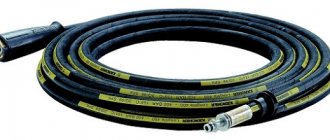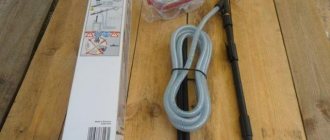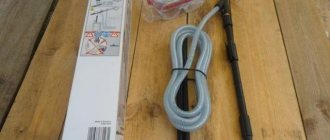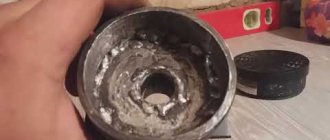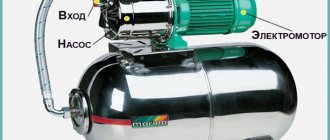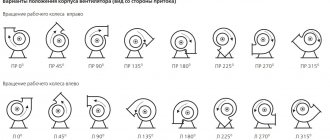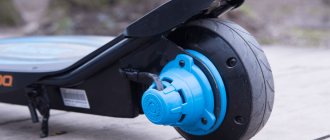Features of high pressure hose repair
High-pressure hoses, more often called high-pressure hoses (HHP), are designed to create or absorb working force, which is transmitted under high pressure by liquids or gases pumped into them.
High pressure hose
The main area of application of RVDs is hydraulic and pneumatic systems of various devices and mechanisms. Outside of industrial production, vehicle owners most often deal with high pressure hoses, these are power steering hoses, and those who use high-pressure pumps, for example, our most common brand, Karcher.
How are power steering tubes repaired?
Modern cars that are supplied to the market are increasingly equipped with a power steering system. The hydraulic booster is included in the design of the steering mechanism and facilitates vehicle control. The driver does not have to exert enormous effort when turning the steering wheel. For stable operation of the hydraulic system, it is important to ensure constant and free flow of working fluid inside between the component elements - this task is solved with the help of special hoses. Over time, this structural part fails.
Offers its assistance in replacing connecting elements. All work is performed by experienced MAZDA service specialists (address: St. Petersburg, Bobruiskaya St., 11). Our clients can expect good discounts on services. As an alternative, car owners can also repair power steering high-pressure hoses themselves.
RVD structure
The design of the RVD is determined by the need to withstand internal pressure, which can reach several hundred atmospheres.
In addition, the inner surface of the high-pressure hose must be impervious to the effects of the transported medium. Therefore, its bottom layer is made of oil- and petrol-resistant rubber or synthetic rubber.
To make the upper, thicker layer of the high-pressure hose, wear-resistant rubber is used, which, if necessary, is supplemented with thermal protection in the form of a corrugated coating, metal or polymer.
Between the upper and lower layers of rubber, metal wire is wound in several layers, thanks to which the hose receives the necessary rigidity and strength. Layers of wire are interspersed with thin rubber films.
Depending on the method of winding the wire, there are two types of high-pressure hoses:
- Winding. When producing this type of hose, turns of wire are wound in even rows.
- Braided. In this case, the turns are wound at an angle to the axis of the hose so that the turns of the previous layer intersect with the turns of the next layer of wire. Braided hoses have greater strength and can withstand greater pressure than coiled hoses.
High pressure hose
In addition to wire, textiles can act as an internal rigid frame.
The number of layers of wire and the thickness of rubber layers are set by standards that determine the scope of application of a particular type of hose.
How are power steering tubes repaired?
Hose connections are subject to significant stress. In addition to mechanical deformations and bends, power steering system tubes are tested by high pressure, temperature changes, and withstand the aggressive effects of chemicals used to produce automotive fluids.
The service life of the tubes largely depends on their quality and the reliability of the connecting fittings. The design of the hoses includes an inner and outer layer, as well as a metal braid. The outer part of the tubes is made of heat-resistant, wear-resistant rubber. The inner surface of the hose is synthetic rubber. The braid gives the RVD additional strength, allowing it to be safely used in extreme conditions.
Masters name a number of reasons why the connecting hose needs to be repaired:
- 1. Poor quality of fitting crimp or defective tube.
- 2. The parameters of the installed hose do not correspond to the conditions of use (pressure is too high, temperature violation, incorrect choice of product length).
- 3. Damage caused by long-term operation of the hose (hose leakage as a result of a break or cut, corrosion processes and failure of sealing of connections, surface abrasion).
A malfunction of the high-pressure hose is indicated by a hum and extraneous noise when the pump is turned on, a decrease in the fluid level in the car's tank, and unclear operation of the steering. Before carrying out repairs, it is important to accurately determine the location and nature of damage to the hose hose - you can do this yourself or seek help from MAZDA service specialists. Professionals in the auto repair shop will perform the work efficiently and inexpensively.
Read also: How much does a Ural chainsaw weigh?
Fittings for high pressure hoses
To secure the hoses in place, fittings (tips) are mounted at their ends, which are of the following types:
- Screw;
- Union;
- Nipple;
- Quick connect connections.
Fittings are attached to the ends of the hose using crimp couplings, which are crimped on special machines.
Depending on the type of shank, fittings are classified into series:
- Universal. This series can be used in all hoses of high pressure hoses with the exception of coiled type hoses.
- Interlock. The series is used for coiled hoses.
When installing fittings of this type, it is necessary to remove both layers of rubber, internal and external.
Fittings for high pressure hoses
The operation of removing layers of rubber is called hose debarking.
- CS. Fittings of this series also crimp coiled hoses, but there is no need to remove the rubber of the upper and lower layers.
Failure of fittings is the most common cause of damage to high pressure hoses. This is explained by the magnitude and intensity of the loads they experience.
Malfunctions and repair of car air conditioning pipes
The main reason for the leakage of car air conditioner pipes is oxidation, which appears as a result of dirt and various reagents used in the winter season. In all cars, air conditioning tubes are made of aluminum, which is very actively oxidized under the influence of our environment; over time, micro pores begin to appear in places where the air conditioner tubes are oxidized, through which the refrigerant begins to escape.
Car air conditioner repair
Refilling car air conditioners
Damage to high pressure hoses
The causes of damage can be divided into the following types:
Important! In order to protect yourself as much as possible from possible damage to hose hoses, when choosing them, it is necessary to carefully check the compliance of their characteristics and parameters with operating conditions.
High pressure hoses with fittings
Replacing damaged high pressure hoses
From all of the above, we can conclude that the repair of high pressure hoses consists of either replacing the damaged area or replacing fittings that have become unusable.
When replacing a damaged area, as well as when replacing fittings, you will need to crimp the couplings, that is, technologically these two actions are very similar.
High pressure hoses
The sequence of operations looks like this:
- The damaged sleeve is disconnected from the main mechanism.
- A new sleeve is cut to the size of the old one on a cutting machine. Moreover, for measurement, the distance between the ends of the nipples at its ends is taken. It is better to choose a hose pump designed for a higher pressure than that for which the old hose pump was designed.
- The markings on the sleeves will help you choose the right diameter.
The factory marking DN indicates the diameter of the internal channel of the hose.
If a non-standard connection is encountered, repairs are carried out using a repair fitting. To do this, take the head of the old fitting, to which the part to be crimped is soldered.
High-pressure hoses
This method is often used by car enthusiasts for emergency repairs of power steering hoses, as well as by owners of Kircher pumps and miniwashes.
Afterword
But in the end, all this torment was not worth it. It’s better to contact the service center and replace the old, broken spare part with a new one.
But if time and money are running out, then you can do like me. You can save money and buy separately only those spare parts that you need, and leave those suitable for use.
Of course, in salons, masters will achieve better results than self-taught drivers. But if hands are not hooks, then why not try?
I hope I helped you, my dear readers. Happy travels!
Source
Repair and replacement of power steering hoses
The reason for damage to power steering hoses is most often that when the steering wheel rotates due to friction, a serious force is generated. This force causes deformation of the elastic element, which changes the size of the holes in the distribution mechanism that regulates the pressure drop in the hydraulic cylinder.
As a result, the power steering sleeve connected to the limit valve wears out. This power steering sleeve is designed for pressure, depending on the make of the car, from 70 to 130 kgf/cm2.
At such high pressure, repairing a damaged power steering hose using clamps or wire is almost impossible.
There are two options left: either replace the entire power steering tube, or replace only the damaged part of it, replacing the fittings with a new hose.
Moreover, it is better to rearrange the fittings in a special workshop.
Replacement and installation of the power steering hose is carried out as follows:
- The front of the car is raised on jacks.
- The steering wheel is turned all the way to the left.
- Using a syringe with a tube attached to a needle, fluid is pumped out of the power steering reservoir.
- After this, the hose is disconnected, and the working holes of the hydraulic system are closed with plugs.
Power steering hoses
The selection of a new hose is made with exact observance of the diameter, otherwise the performance qualities of the power steering may change.
What is a crimp coupling?
Crimp coupling (sleeve, sleeve, ring) is a compression fitting designed for mounting end fittings on a high-pressure hose (HPR). The coupling is an integral part of all types of RVD end fittings, solving several problems:
- Mechanical fixation of the end fittings on the hose, ensuring its normal functioning at high pressure;
- Protection of the end part of the hose from ruptures and deformations;
- Due to its rigidity, it protects the end parts of the hose from bending when installed with bends.
With the help of crimp couplings, a permanent connection of the hose hose with fittings is ensured; they are used in piece and serial production of high-pressure hoses (hoses) for hydraulic systems of various types and purposes.
Types and designs of crimp couplings
RVD end fittings - coupling and nipple with nut
Connecting a high-pressure hose with an end fitting
Structurally, all couplings are the same - it is a short steel tube (bushing), at one end of which there is a collar directed inward to rest against the end of the hose. The outer surface of the couplings is smooth; on one edge there may be markings in the form of one or more annular grooves, a narrowing of the diameter or hatching. Also, alphanumeric markings can be applied to the coupling.
Crimp couplings are divided into several types according to their applicability and the structure of the internal surface.
There are two main types of couplings:
Lightweight couplings have a small wall thickness; they are designed for mounting end fittings on hose hoses of types 1 ST/SN and 2 ST/SN (with one and two braids). Reinforced couplings are designed for use with hose hoses of types 4 SP/SH, R12 and R13 (with four and six braids) and others.
In this case, crimp couplings are divided into two groups according to the method of installation on the hose:
Stripping couplings require stripping (barking) of the outer and/or inner layer of the hose for installation; they come into direct contact with the outer wire braid. Non-stripping couplings can be mounted directly on the hose without removing the outer layer; couplings for plastic and metal-plastic pipes also belong to this type.
There are three main types of connection:
- Includes two components
: a hose fitting and a bushing. The fitting inserted into the hose is compressed using a sleeve. This method is widely used on large highways, as well as for personal use. - With the integral method, the sleeve and fitting form a single device. This connection method is used for gas appliances and high-pressure pipes.
- Twisting method.
When using welded connections, only one side of the fitting ( GOST 16045-70
) is made with a thread into which a pipe or valve is screwed, and the other side, which is left without thread, is welded to the container or pipeline.
Manufactured from alloy steel grade 12Х18Н9Т (Х18Н9Т).
Read also: Universal sharpening machine for metal cutters
Swivel fitting
(
hydraulic hinge
) is used to produce a connection with the possibility of rotation (
GOST 25681-83
).
Material
: stainless steel, aluminum.
Adapter fittings
(
GOST 21856-78
) are intended for changing one thread template to another.
Selection and correct use of crimp couplings
The choice of crimp couplings must be made based on the type of high-pressure hoses, their characteristics, dimensions and purpose. For hose hoses of types 1 ST/SN and 2 ST/SN, lightweight couplings are suitable; to work with hose hoses of types 4 SP/SH, R12 and R13, it is necessary to use reinforced couplings. In most cases, it is sufficient to use universal couplings, although in the manufacture of some pipelines, end fittings with specially designed couplings may be required.
Corrugated couplings are best suited for rubber hose hoses, which ensure the most reliable installation during longitudinal crimping. Smooth couplings are used for transverse crimping, during which annular grooves are formed on the coupling. Smooth couplings are also used to work with many types of plastic pipelines.
When choosing couplings, special attention should be paid to the technology of their installation, namely, whether it requires stripping the hose or not. If the coupling is stripping, then the hose must first be prepared - remove the outer and/or inner rubber layer; if the coupling is not stripped, then installation can be performed without pre-processing the sleeve. Installation of stripping couplings on an unstripped hose is prohibited, as this reduces the reliability of the hose and end fittings. This rule is also relevant for non-stripped couplings - it is not recommended to install them on a stripped hose.
Crimping of high-pressure hoses is carried out using special presses. If the work is carried out using stripping couplings, then you also need to have a debarking machine to remove the top and/or inner layer of the hose. If crimping is performed correctly, the high-pressure hose and its end fittings will meet the requirements of GOST; such products will ensure reliable operation of hydraulic and other systems in any conditions.
